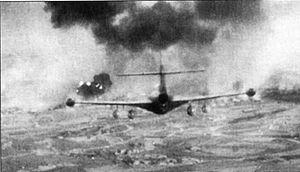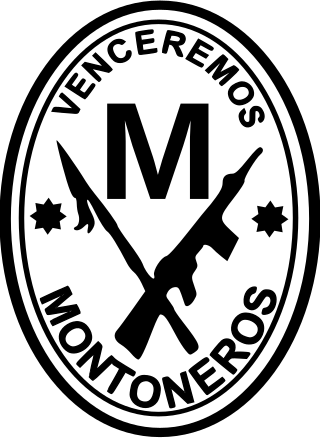
Montoneros was an Argentine far-left Peronist and Catholic revolutionary guerrilla organization, which emerged in the 1970s during the "Argentine Revolution" dictatorship. Its name was a reference to the 19th-century cavalry militias called Montoneras, which fought for the Federalist Party in the Argentine civil wars. Radicalized by the political repression of anti-Peronist regimes, the Cuban Revolution and socialist worker-priests committed to liberation theology, the Montoneros emerged from the 1960s Catholic revolutionary guerilla Comando Camilo Torres as a "national liberation movement", and became a convergence of revolutionary Peronism, Guevarism, and the revolutionary Catholicism of Juan García Elorrio shaped by Camilism. They fought for the return of Juan Perón to Argentina and the establishment of "Christian national socialism", based on 'indigenous' Argentinian and Catholic socialism, seen as the ultimate conclusion of Peronist doctrine.

Juan Carlos Onganía Carballo was President of Argentina from 29 June 1966 to 8 June 1970. He rose to power as dictator after toppling the president Arturo Illia in a coup d'état self-named "Argentine Revolution".

Arturo Umberto Illia was an Argentine politician and physician, who was President of Argentina from 12 October 1963, to 28 June 1966. He was a member of the centrist Radical Civic Union.

José María Guido Cibeira was President of Argentina from 29 March 1962 to 12 October 1963, serving as the head of a provisional civilian government after the Argentine military overthrew President Arturo Frondizi. Guido's nineteen months in office were characterized by a severe economic recession, open conflict between competing factions within the armed forces, and anti-democratic measures including continued proscription of Peronists from Argentine politics. Yet Guido, with critical support from the "legalist" faction of the military, prevailed in his mission to return Argentina to constitutional government with a general election held on 7 July 1963.
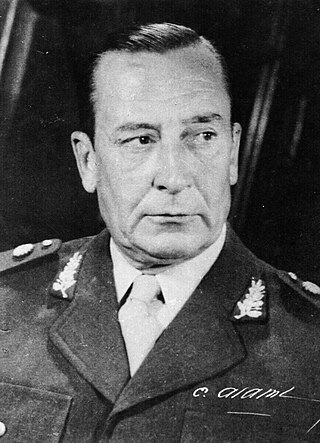
Pedro Eugenio Aramburu Silveti was an Argentine Army general who was the dictator of Argentina from November 13, 1955, to May 1, 1958. He was a major figure behind the Revolución Libertadora, the military coup against Juan Perón in 1955. He was kidnapped by the left-wing organization Montoneros on May 29, 1970, and assassinated as part of retaliation. He had been involved in the June 1956 execution of Army General Juan José Valle—associated with the Peronist movement— and 26 Peronist militants, after a botched attempt to overthrow his regime.
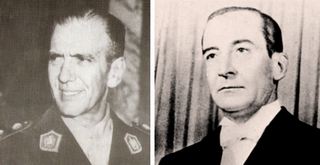
Revolución Libertadora was the coup d'état that ended the second presidential term of Juan Perón in Argentina, on 16 September 1955.

Baltasar Hidalgo de Cisneros y de la Torre was a Spanish naval officer born in Cartagena. He took part in the Battle of Cape St Vincent and the Battle of Trafalgar, and in the Spanish resistance against Napoleon's invasion in 1808. He was later appointed Viceroy of the Viceroyalty of the Río de la Plata, replacing Santiago de Liniers. He disestablished the government Junta of Javier de Elío and quelled the Chuquisaca Revolution and the La Paz revolution. An open cabildo deposed him as viceroy during the May Revolution, but he attempted to be the president of the new government junta, thus retaining power. The popular unrest in Buenos Aires did not allow that, so he resigned. He was banished back to Spain shortly after that, and died in 1829.

The following is an alphabetical list of topics related to the Argentina.

Ricardo Balbín was an Argentine lawyer and politician, and one of the most important figures of the centrist Radical Civic Union (UCR), for which he was the presidential nominee four times: in 1951, 1958, and twice in 1973.

The bombing of Plaza de Mayo was a massacre in Buenos Aires, Argentina, on 16 June 1955. Thirty aircraft from the Argentine Navy and Air Force strafed Plaza de Mayo. The attack targeted the adjacent Casa Rosada, the seat of government, while a large crowd demonstrated in support of the president, Juan Perón. The strike took place during a day of official public demonstrations to condemn the burning of a national flag allegedly carried out by detractors of Perón during the recent Corpus Christi procession. The military reacted as a result of growing tension between Peron and his actions against the Roman Catholic Church. The action was to be the first step in an eventually aborted coup d'état. The number of identified bodies was put at 308, including six children. Some victims could not be identified.

Isaac Francisco Rojas Madariaga was an Argentine Admiral of the Navy and de facto Vice President of Argentina. He joined the Argentine Navy and had an unremarkable career until the 1946 election of Juan Perón.
Ciudad Evita is a city in the partido of La Matanza in Buenos Aires Province, Argentina, located 20 kilometers (13 mi) from Downtown Buenos Aires within the Greater Buenos Aires metro area. Ciudad Evita has a population of 68,650 (2001).
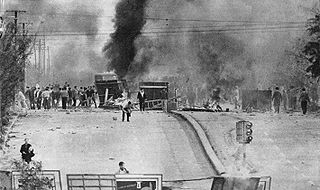
The Cordobazo was a civil uprising in the city of Córdoba, Argentina, at the end of May 1969, during the military dictatorship of General Juan Carlos Onganía, which occurred a few days after the Rosariazo, and a year after the global protests of 1968. Contrary to previous protests, the Cordobazo did not correspond to previous struggles, headed by Marxist workers' leaders, but associated students and workers in the same struggle against the military government.
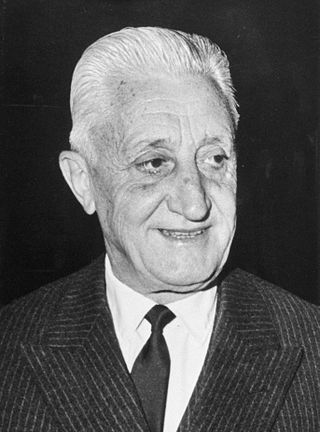
The Argentine general election of 1963 was held on 7 July. Voters chose both the President and their legislators; with a turnout of 85.6%, resulting in the election of Arturo Illia as President of Argentina.

Augusto Timoteo Vandor (1923–1969) was an Argentine trade unionist leader, naval non-commissioned officer and politician who was assassinated.

Argentine Revolution was the name given by its leaders to a military coup d'état which overthrew the government of Argentina in June 1966 and began a period of military dictatorship by a junta from then until 1973.
The history of Argentina can be divided into four main parts: the pre-Columbian time or early history, the colonial period (1536–1809), the period of nation-building (1810–1880), and the history of modern Argentina.
David Kraiselburd (1912–1974) was an Argentine journalist, newspaper publisher, and lawyer, best known for his commitment and actions against military regimes and political violence of both right- and left-wing extraction. He was assassinated shortly after the beginning of the Dirty War—in mid-1974—and shortly before the military coup.
In Argentina, there were six coups d'état during the 20th century: in 1930, 1943, 1955, 1962, 1966 and 1976. The first four established interim dictatorships, while the last two established dictatorships of permanent type on the model of a bureaucratic-authoritarian state. The latter conducted a Dirty War in the line of State terrorism, in which human rights were systematically violated and there were tens of thousands of forced disappearances.
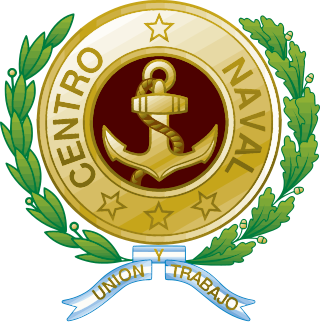
Centro Naval, is an Argentine sports and social club, established in 1882 by a group of Argentine Navy officers. The rugby union team currently plays in Primera C, the fourth division of the URBA league system. The club has also a women's rugby team competing in "Torneo Femenino", organised by the same body.
